It’s a story we’re all familiar with: A concept tests well, generating encouraging appeal within the target audience. Diagnostics are strong as well—the concept is unique and viewed as better than currently available competitive offerings. Best of all, there’s willingness to pay—prospective buyers have shown a propensity to trial the new offering even at the highest price points proposed in the research. But how do we really make it a success? What are the circumstances under which a customer actually buys this product? How do we market to these occasions?
Situational context matters immensely. The best new hot chocolate might not sell much on a hot summer day. An elegant dress probably won’t be considered when out shopping for new exercise clothes. And the rental car company’s offer to upgrade a loyal customer to a fancy two-seater sports car fails to generate interest when the trip happens to be a family of four’s vacation. In short, regardless of how great a product or offering is, it probably won’t be the best option in all cases. Notice, none of these reasons not to buy are a problem with the product or an indicator that customers lack interest in general.
To fit products to situations customers would actually buy them, Occasion-Based Conjoint (OBC) is a perfect fit. This methodology, similar to Choice-Based Conjoint (CBC), focuses not on choosing whether or not to make a purchase but on selecting the occasions for making the purchase. We start by defining a list of possible occasions. Let’s consider a delicious new take on hot chocolate. The occasions the producer is seeking to target may look something like:
- At a winter holiday celebration
- Out to eat with my family/friends
- Stocking up to have snacks available for my kids
- Out on the town for a date night
- An indulgent breakfast
Then, we build a design matrix to test the various ways the product may be offered, including elements such as size, flavor, price, and even messaging around it. In the online survey, respondents are shown a series of potential offerings and asked to select for what occasions they would make a purchase:
| New Hot Chocolate | |
|
Mint Mocha Delight Just the right hint of mint!
|
|
| 10 oz. Serving | $3.49 |
| 14 oz. Serving | $3.99 |
|
Which of the following occasions would you purchase this new product? (SELECT ALL THAT APPLY)
|
|
This process is repeated several times to build an understanding of how changing the test elements impacts purchase intent. For instance, if we made it Caramel Fudge instead of Mint Mocha, does that make it a more appealing option to stock up for serving kids snacks? In the end, we build an understanding of how to position the product to win in the occasions that customers see the offering as a good fit. This may lead us to tailor the offer differently for various occasions, ultimately expanding the potential reach for the product, driving better sales performance overall. The approach can also be used to determine the incrementality of the offer in question, how positioning can drive new purchase behavior across occasions.
Next time you are gearing up to bring a new offering to market, consider exploring beyond the surface of overarching customer reactions. Identify when and where the most meaningful opportunities for your product or service exist by understanding the importance of situational context. This approach can reveal critical insights, enabling you to adjust your marketing strategies for maximum effectiveness and help your great concept achieve its full potential.



